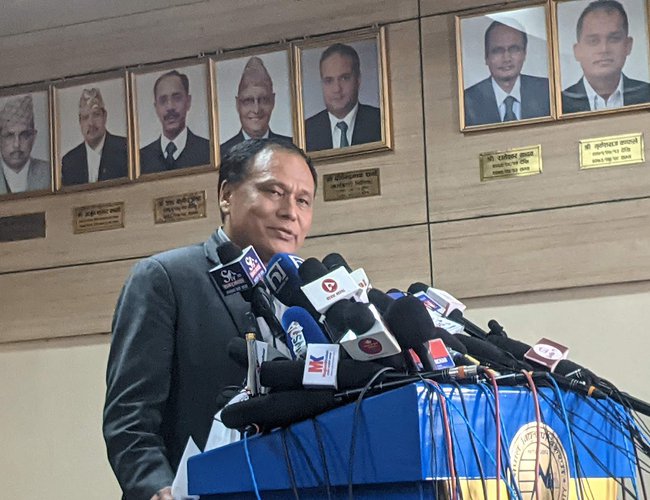
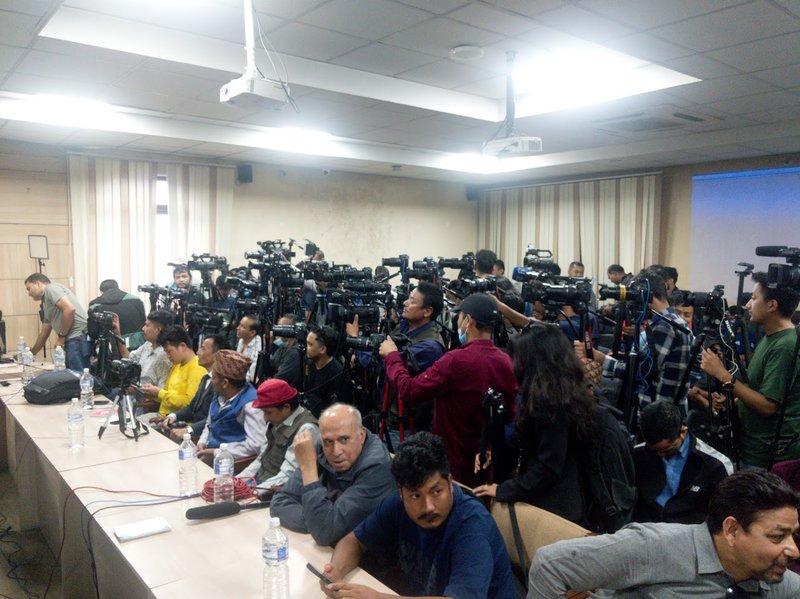
The Greek philosopher Plato posited that a man requires seven years of silent inquiry to uncover the truth, and an additional fourteen years to learn how to communicate that truth to others. This principle is exemplified in the career of MD Ghising.
Through extensive silent contemplation and inquiry, MD Ghising has acquired invaluable insights that have significantly transformed the Nepal Electricity Authority (NEA) and the electricity sector in Nepal. Under his strong leadership, the NEA team has achieved remarkable and visible improvements.
Having successfully ended a decade-long period of load shedding, Ghising, a Tamang lad from the remote hilly region of Ramechhap, has emerged as a prominent figure in the nation.
He has also altered the prevailing narrative that India would not purchase electricity generated in Nepal, successfully exporting substantial amounts of electricity to India.
Amidst widespread dissatisfaction with the existing state of affairs and the inefficiencies in service delivery, particularly among the youth, MD Ghising has garnered admiration for his tangible contributions in providing uninterrupted electricity to households. His efforts have endeared him to the general populace.
The significant presence of media representatives at a recent press conference underscored his popularity. Nevertheless, some critics, including the Prime Minister, business leaders, and experts, have accused the media of excessively glorifying Ghising for what they perceive as his routine responsibilities.
There is an increasing public sympathy for MD Ghising, stemming from the unwarranted criticism, personal attacks, and harassment directed at him regarding the disputes over dedicated feeders and trunk line billing, which have been fueled by high-ranking government officials, certain business leaders, and some members of the Public Accounts Committee.
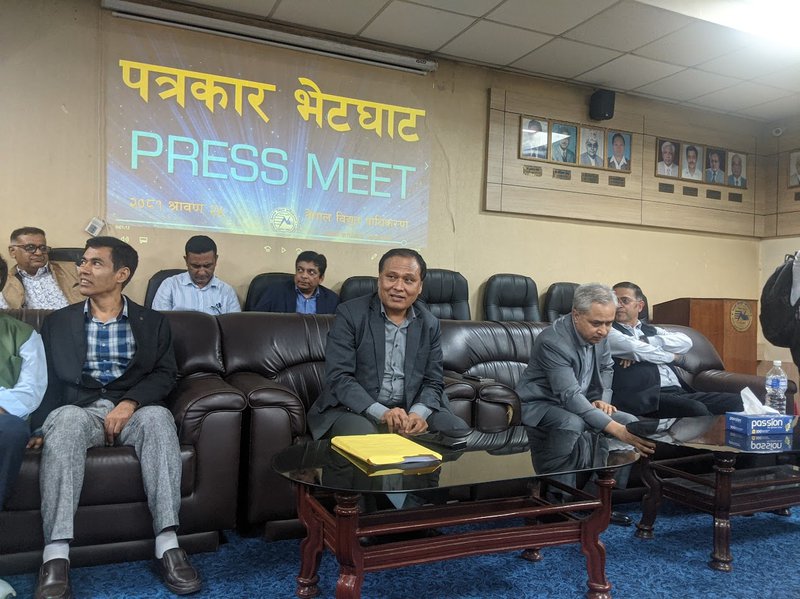
The attempts by top government leaders to undermine a well-regarded figure may inadvertently bolster those seeking to disrupt the political landscape. Recently, Nepali Congress leader Dr. Shekhar Koirala expressed concerns in a public gathering that, given the current circumstances, Nepal may experience political turmoil similar to that of Bangladesh.
MD Ghising has been subjected to relentless attacks from the ruling CPN-UML party-led Public Accounts Committee, as well as from former Deputy Inspector General of Nepal Police Ramesh Khrel, who positions himself as an anti-corruption advocate, and from business groups that have refused to remit revenue to the NEA for services rendered through dedicated feeder lines, alongside some retired NEA officials and a segment of urban elites.
Nevertheless, MD Ghising enjoys considerable popularity among the general populace. With over 500,000 fan clubs on Facebook and widespread support for his efforts to eliminate decades of load shedding in Nepal, any inflammatory comments made by Ghising could escalate the situation from calm to chaotic.
Transitioning from a state of loss to achieving profitability
The Nepal Electricity Authority (NEA), which experienced financial losses until the fiscal year 072/73, has achieved consistent profitability under the guidance of Managing Director Ghising. The current electricity leakage rate, previously at 25.78%, has been significantly reduced to 12.73%. This improvement alone has resulted in an additional annual revenue of approximately Rs. 12 billion for the NEA.
Despite the government's increasing 'unnecessary' pressure on MD Ghising regarding the dispute over the dedicated feeder and trunk line premium tariff, Ghising has successfully transformed the fully government-owned authority into a model of profitability.
MD Ghising stated that since his initial appointment, the NEA has turned a profit by minimizing both technical and non-technical electricity losses, expanding customer access, lowering financial expenditures, enhancing revenue, and improving institutional governance to facilitate the expansion of transmission and distribution networks and substations.
The financial outlook for the Nepal Electricity Authority, established on 1 Bhadrat 2042 under complete government ownership, was bleak until the fiscal year 072/73. During that year, the NEA recorded a loss of 8.89 billion rupees, with accumulated losses reaching 34.61 billion rupees by 2073, compounded by prolonged load shedding issues.
Concurrently, Ghising was appointed as the Managing Director of the Nepal Electricity Authority (NEA) for the first time on Bhadra, 073. The following year, the NEA reported a profit of 1.5 billion rupees. In the same year, on the day of Lakshmi Puja in October, domestic load shedding was eliminated.
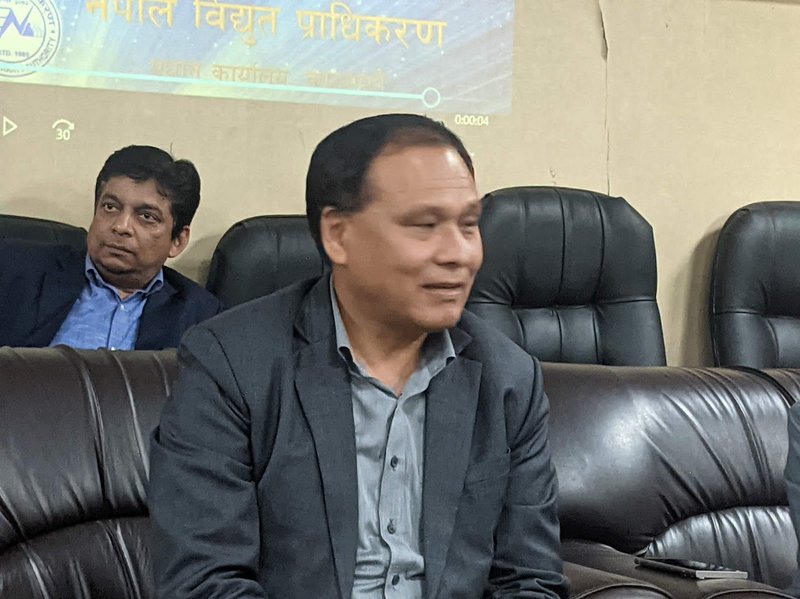
The accumulated loss was reduced to 28.42 billion rupees. Since that time, the NEA has consistently generated profits. From the fiscal years 073/74 to 080/81, the authority achieved a total profit of 74.41 billion rupees, with profits of 1.5 billion in 073/74, 2.98 billion in 074/75, 9.84 billion in 075/76, 13.37 billion in 076/77, 6.27 billion in 077/78, 15.6 billion in 078/79, 12.8 billion in 079/80, and 13.31 billion in 080/81. The accumulated profit of the NEA has reached 47.41 billion rupees as of last year.
In the fiscal year 072/73, the NEA's reserves were at a loss of 34.61 billion rupees, which decreased to 28.42 billion in FY 073/74, 25.30 billion in FY 074/75, and 12.18 billion in FY 075/76.
In the fiscal year 076/77, the authority recorded a surplus of 4.49 billion rupees. This surplus increased to 11.60 billion rupees in 077/78, 24.77 billion rupees in 078/79, 33.64 billion rupees in 079/80, and reached 47.41 billion rupees in 080/81. Recently, the financial health of the authority has shown significant improvement.
Surplus Electricity
In terms of surplus electricity, load shedding in the industrial sector was eliminated as of 31 Baisakh 075. Furthermore, since October 078, electricity has been commercially exported to India, marking Nepal's transition to a net exporter of electricity over the past year. The authority appears to be strengthening not only its financial position but also its operational performance and management through the development of various infrastructures.
From 27th January 077 to August 078, Hitendradev Shakya served as the Managing Director of the Authority. Following the completion of his initial term, Ghising, who departed in Bhadra 2077, was reappointed on 25th Sharwan 078, with his tenure extending until Sharwan 082. During this period, Ghising has played a pivotal role in enhancing the profitability and organization of the NEA. In a press conference held on Friday, 2 August, MD Ghising emphasized his commitment to making the authority financially viable.
The assessment conducted by ICRA Nepal has affirmed the robust financial status of the authority. In its credit rating evaluations, ICRA Nepal has consistently awarded the authority a 'Double A Plus' rating, indicating its strong capacity to meet financial and economic commitments reliably.
The Nepal Electricity Authority (NEA) is planning to offer 10 percent of its shares to the general public, following the establishment of a paid-up capital amounting to three billion. As of June 073, NEA's total assets were valued at 211 billion rupees, which has grown to 632 billion rupees by the end of the previous year.
The authority has undertaken a comprehensive asset valuation with the assistance of an international consultant, which suggests that its asset value is expected to rise further. Managing Director Ghising of NEA stated that, despite a decrease in electricity tariffs, the organization has successfully maintained profitability.
Recently, there have been three instances of a 25% reduction in electricity tariffs; however, profits continue to rise. Approximately 2.2 million customers are receiving free electricity, with a nominal charge of Rs 30, as stated by the official.
To promote the use of electric vehicles, concessional tariff rates have been sustained at charging stations. This approach demonstrates the authority's commitment to fulfilling its social responsibilities while also pursuing profit. Ghising asserted that the profits of the NEA are not merely theoretical.
These profits have been validated by various government entities, including the Auditor General, and are not just figures fabricated by the NEA.
He emphasized that the profits generated by the authority represent more than mere numerical data; they have become a dependable source for investing in the development of electricity infrastructure and expanding services, which will ultimately lead to increased profits in the future.
Presently, the energy sector is regarded as a vital foundation for the economic development of Nepal. A bilateral agreement has been established to export 10,000 megawatts of electricity to India over the next decade.
Ghising scores 99 percent in performance
The Ministry of Energy has awarded Ghising a performance evaluation score of 98.94 percent. A performance agreement was established between the ministry and myself, incorporating various indicators related to the reform of the Nepal Electricity Authority (NEA). In the assessment, scores of 94.23 percent and 98.94 percent were achieved for the fiscal years 078/79 and 079/80, respectively. The evaluation for the year 080/81 is currently underway, he stated.
Enhancing Electrification
In the fiscal year 072/73, the country's electrification rate stood at only 58%, whereas it had improved to 89.7% three years ago. Presently, the electrification status has reached an impressive 99%. Eight years prior, the number of electricity consumers was 2.97 million, and it has now grown to 5.93 million, including community connections. MD Ghising indicated that the nation will soon be officially recognized as fully electrified.

Significant Accomplishments
Eight years ago, the annual electricity consumption was recorded at three billion and 72 million units. This figure has now escalated to 10 billion and 23 million units. Per capita energy consumption has risen from 131 units to 400 units.
Over the past eight years, the electricity tariff has been reduced three times, amounting to a decrease of approximately 25%. Notably, despite these reductions, profits have continued to rise.
Increasing the Reach
Among a total of 5,090,000 customers, approximately 2,020,000 have received free energy by adhering to a minimum charge of only Rs 30. For agricultural purposes, electricity is provided at a rate of two rupees per unit, and there are no demand charges for the extraction of drinking water, along with concessions on energy costs.
The credit rating agency ICRA Nepal has consistently awarded the Electricity Authority a 'Double A Plus' rating, indicating the authority's capability to meet its financial obligations with assurance. Over the past eight years, the authority has invested nearly one billion in capital and has allocated more than 56.68 billion to its subsidiaries and affiliated companies.
Net Profit
The NEA emphasizes that its profits are not merely theoretical but serve as a foundation for internal investments. Additionally, the volume of electricity exports has been on the rise each year, with Nepal officially commencing exports in November 2021. By the end of the last financial year, the Authority had exported 1.94 billion units of electricity, generating revenue of 17.7 billion. During the monsoon season, daily exports exceed 700 megawatts.
The authority reported that last year, 1.91 billion units of electricity were imported from India due to decreased production during the dry season. Nevertheless, exports exceeded imports by approximately 13 million rupees during the same period. Since the fiscal year 080/81, Nepal has transitioned from being a net importer to a net exporter of electricity. Plans are underway to commence electricity exports to Bangladesh this year.
Expansion of Transmission
Regarding the transmission infrastructure, Nepal's national grid, which previously operated on 132 kV transmission lines, has now upgraded to 400 kV and 220 kV systems. The length of the transmission lines has expanded from 2,900 circuit kilometers eight years ago to 6,500 circuit kilometers today. The Nepal Electricity Authority (NEA) has stated that the transmission network, which is designed to facilitate the export of 20,000 megawatts of electricity, will be further developed by 2035. The total connected electricity capacity has reached 3,157 MW, with 2,300 megawatts added in the past eight years and 1,706 megawatts in the last three years. Hydropower remains the dominant source, contributing 2,991 MW to the installed capacity.
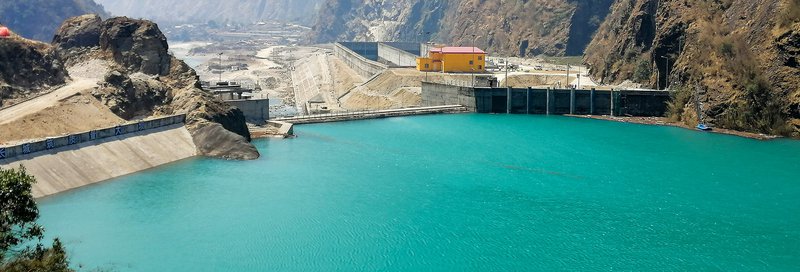
On Dedicated Feeder
During periods of load shedding, we have requested a premium tariff from industrial users based on their electricity consumption via dedicated feeders and trunk lines.
For instance, if an industrialist utilizes 1000 units of electricity within a month, they have already settled the standard charges associated with that consumption.
“We have now issued a discount bill reflecting the premium fee for the same 1000 units of electricity. Based on substantial evidence, we have provided exemption bills for the premium charges to industries utilizing dedicated feeders and trunk lines, as we possess records of their electricity usage during that period,” said MD Ghising.
Previously, we have presented this evidence to relevant authorities, including the court, and submitted it to the Public Account Committee. Should an industrialist request proof through media channels, we maintain that there is no intention to disseminate such evidence publicly.
“The customer is responsible for paying the fee through small monthly installments. The same regulations will apply across the industry. We have already provided the necessary documentation to the appropriate authorities. The industrialists expressed their dissatisfaction with the bill and subsequently pursued legal action. During the court proceedings, we presented evidence from Chang and Chang. The court ruled in favor of the authority, affirming the accuracy of the bill issued,“ said MD Ghising.
Significant achievements are accomplished not through sheer force, but through steadfast determination. Those who maintain an active pace for three hours each day will, over the course of seven years, cover a distance equivalent to the Earth's circumference, as noted by the English philosopher Samuel Johnson.
Through relentless effort from dawn until dusk, MD Ghising has transformed a previously unprofitable public utility into a reliable and profitable power provider. As the NEA commemorates its 39th anniversary, MD Ghising has established NEA as a robust institution, effectively managing challenges with a composed demeanor in a demanding role.

Keshab Poudel
Poudel is the editor of New Spotlight Magazine.
- KUL MAN GHISING: Bowing Down To The People
- Apr 13, 2025
- POLITICAL VIOLENCE: Culture of Impunity
- Apr 11, 2025
- PM OLI MEETS PM MODI: No Progress
- Apr 09, 2025
- PM OLI’S THAILAND VISIT: Flip Flop
- Apr 08, 2025
- FM Dr. Deuba’s India Visit: Mission Aborted
- Mar 26, 2025














